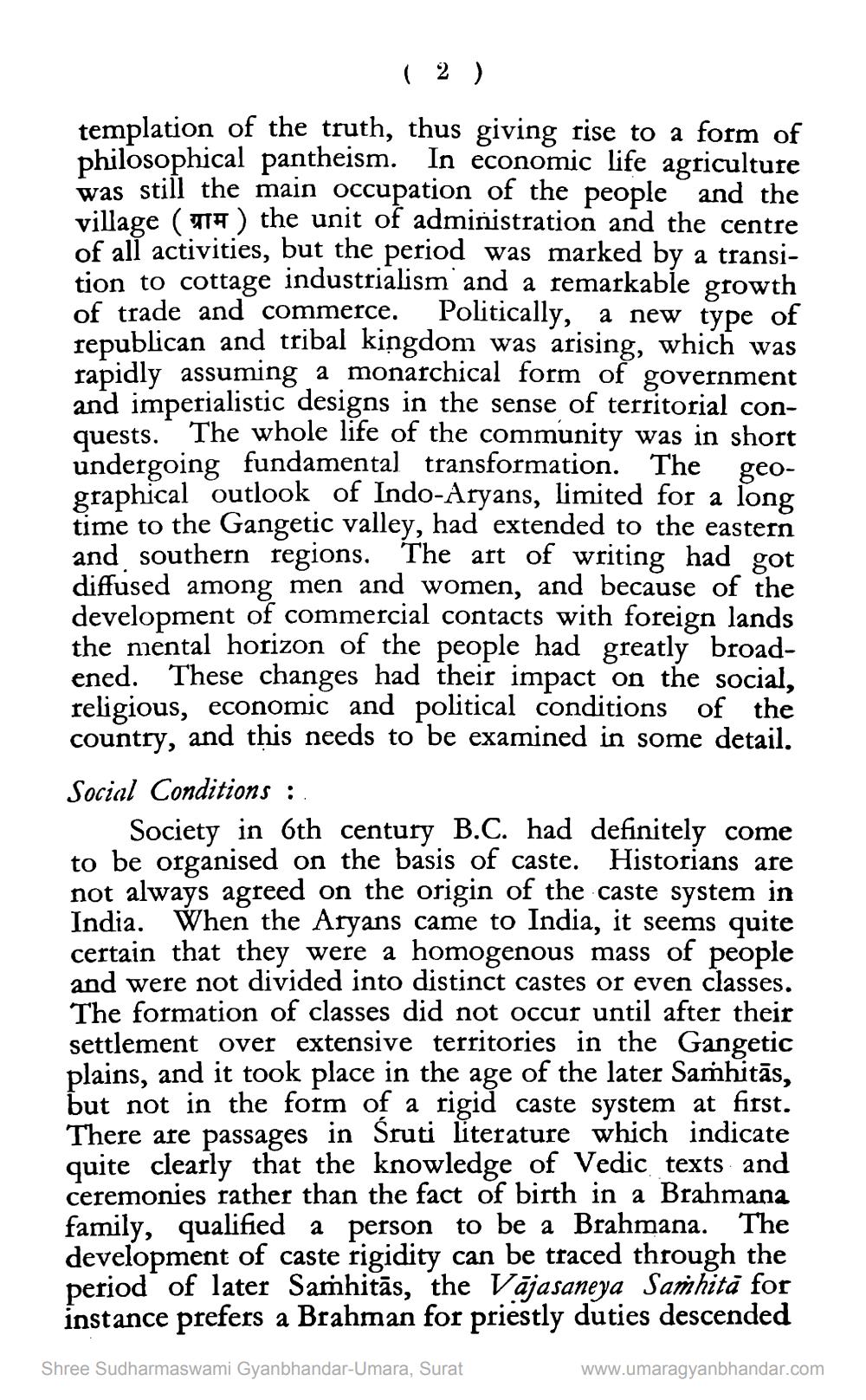Book Title: Lord Mahavira Author(s): Boolchand Publisher: Jain Cultural Research Society View full book textPage 9
________________ ( 2 ) templation of the truth, thus giving rise to a form of philosophical pantheism. In economic life agriculture was still the main occupation of the people and the village (TTA) the unit of administration and the centre of all activities, but the period was marked by a transition to cottage industrialism and a remarkable growth of trade and commerce. Politically, a new type of republican and tribal kingdom was arising, which was rapidly assuming a monarchical form of government and imperialistic designs in the sense of territorial conquests. The whole life of the community was in short undergoing fundamental transformation. The geographical outlook of Indo-Aryans, limited for a long time to the Gangetic valley, had extended to the eastern and southern regions. The art of writing had got diffused among men and women, and because of the development of commercial contacts with foreign lands the mental horizon of the people had greatly broadened. These changes had their impact on the social, religious, economic and political conditions of the country, and this needs to be examined in some detail. Social Conditions : Society in 6th century B.C. had definitely come to be organised on the basis of caste. Historians are not always agreed on the origin of the caste system in India. When the Aryans came to India, it seems quite certain that they were a homogenous mass of people and were not divided into distinct castes or even classes. The formation of classes did not occur until after their settlement over extensive territories in the Gangetic plains, and it took place in the age of the later Samhitās, but not in the form of a rigid caste system at first. There are passages in Sruti literature which indicate quite clearly that the knowledge of Vedic texts and ceremonies rather than the fact of birth in a Brahmana family, qualified a person to be a Brahmana. The development of caste rigidity can be traced through the period of later Samhitās, the Vājasaneya Samhitā for instance prefers a Brahman for priestly duties descended Shree Sudharmaswami Gyanbhandar-Umara, Surat www.umaragyanbhandar.comPage Navigation
1 ... 7 8 9 10 11 12 13 14 15 16 17 18 19 20 21 22 23 24 25 26 27 28 29 30 31 32 33 34 35 36 37 38 39 40 41 42 43 44 45 46 47 48 49 50 51 52 53 54 55 56 57 58 59 60 61 62 63 64 65 66 67 68 69 70 71 72 73 74 75 76 77 78 79 80 81 82 83 84 85 86 87 88 89 90 91 92 ... 124
